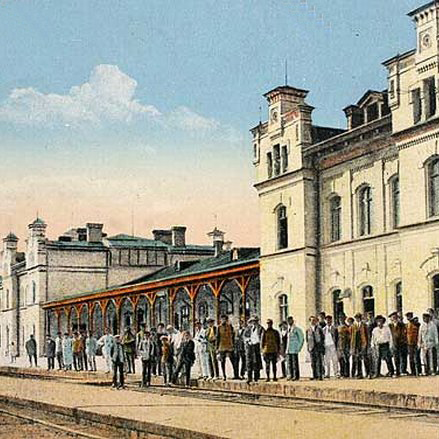ON THE INDUSTRIAL HISTORY OF MOLDOVA
The fertile black soil is the country's only significant resource; the few mineral resources worth mentioning are limestone and gypsum, which can be used for the production of building materials. Therefore, especially in the heartland between the Pruth and Dniester rivers in today's Republic of Moldova, the conditions for industrialisation were poor and the population lived in poverty for centuries.
In the Middle Ages, the Dniester served as an artery for trade between Poland and the Black Sea, and the Republic of Genoa built fortified bases on its banks. In this era, underground limestone mining began in the hills around Cricova near the capital Chişinău. Today, the caverns which mining created serve as a warehouse for wine merchants and a viticulture museum.
In 1812, the under-developed land passed from the Ottomans to the Russian tsars, who called it "Bessarabia". Chişinău was developed as the capital, designed using a fashionable, rectangular grid, street pattern, that is still well preserved. In 1867, the first train towards Odessa rolled out of the railway station in Tiraspol in today's Transnistria, east of the Dniester. Chişinău was connected to the railway a few years later. In 1877, the famous French engineer Gustave Eiffel built a new railway bridge over the Pruth on the route to Romania. In 1897, the "Kvint" company, which still produces wines and spirits today, opened in Tiraspol, but sustained growth failed to materialise.
After the First World War, Moldova became part of Romania. Although the new government immediately introduced agricultural reforms, farming remained unproductive. Apart from traditional handicrafts, trade was limited to small businesses that processed agricultural products, such as mills and oil presses.
After the Second World War, the country once again passed into Russian hands and the government in Moscow launched a comprehensive industrialisation campaign. However, unlike in most Soviet republics, the emphasis was on the mechanisation of agriculture and the expansion of the food industry. Sugar factories, dairies and canning plants were built, and thanks to new, large-scale wine presses and distilleries Moldovan wines and brandies became important exports valued far beyond the Soviet Union. Moldova's agriculture soon became one of the most productive economic sectors in the Soviet Union.
At the same time, machine and tractor construction plants as well as factories for textiles and electrical appliances were built in the larger cities. Heavy industry was concentrated east of the Dniester: since 1954, a hydroelectric power plant has been generating electricity at the Dubăsari reservoir, followed by the Kuchurgan power plant in 1964. In Rîbniţa, a large cement factory opened its doors in 1961 and a steelworks in 1985. The textile manufacturer "Tirotex" was founded in Tiraspol. Right up to the present, the country's most important industrial plants are located in Transnistria - the region that de facto seceded after Moldova's declaration of independence in 1991 and joined Russia. The Romanian influenced heartland, practically an agrarian state, lacking the cheap supply of energy and raw materials from the disintegrated Soviet Union, has since been in a severe economic crisis.
At the same time, factories for machine and tractor construction as well as factories for textiles and electrical appliances were built in the larger cities. Heavy industry, on the other hand, was concentrated east of the Dniester: since 1954, a hydroelectric power plant has been generating electricity at the Dubăsari reservoir, followed by the Kuchurgan power plant in 1964. In Rîbniţa, a large cement factory opened its doors in 1961 and a steelworks in 1985. The textile manufacturer "Tirotex" was founded in Tiraspol. The country's most important industrial plants are still located in Transnistria - the region that de facto seceded after Moldova's declaration of independence in 1991 and joined Russia. The more Romanian heartland, practically an agrarian state, which also lacks cheap energy and raw material supplies from the disintegrated Soviet Union, has since been in a severe, ongoing economic crisis.
Moldova was a union republic of the 'Union of Soviet Socialist Republics (USSR)', which was dissoluted in 1991.
Therefore, for completeness, also read our articles on the industrial history of the other former soviet republics
Armenia
Azerbaijan
Belarus
Estonia
Georgia
Kazakhstan
Latvia
Lithuania
Russia
Ukraine


